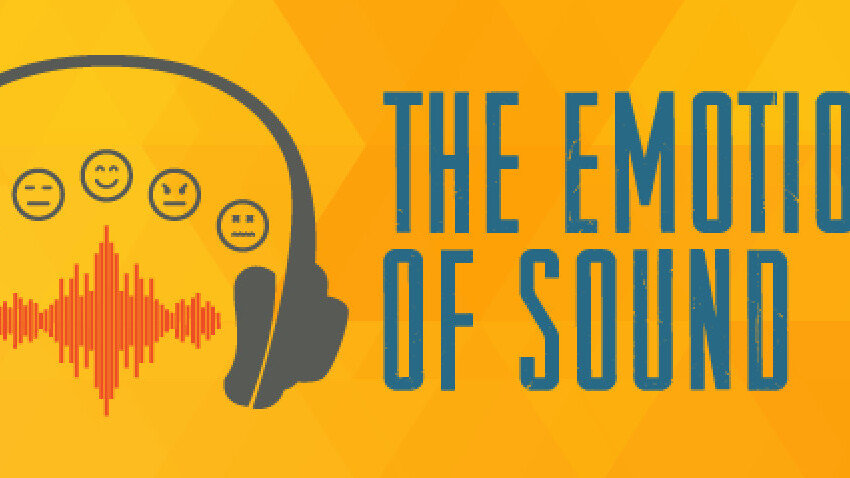
Andrea Lehr is a Promotions Supervisor at Frac.tl. Working with her creative team, she enjoys sharing their latest innovative and unique research with other content marketers.
Content marketing continues to rise in popularity among digital strategists, and this is no surprise when you look at search trends over the last seven years; between January 2008 and November 2014, the number of Google searches for the term “content marketing” increased 700 percent.
Because the Internet is full of written content, successful strategists realize that they need to create content for multiple channels in order to stand out from the rest of the crowd. More and more, brands are relying on video for its ability to deliver highly memorable and emotional content through the incorporation of sound.
But just how powerful is sound? A study in the European Journal of Neuroscience asked 17 participants to listen to four symphonies as they monitored their brain activity. The results revealed that cohesive parts of the brain light up when listening to sound – specifically those involved with movement, attention, planning, and memory.
When applied to content marketing, a strategist can use the combination of sound and visuals through video to quickly grab an audience’s attention and include memorable images that it will now associate with the brand.
BuzzStream recently partnered with Fractl to better understand this phenomenon and the emotional impact of sound. We asked over 1,000 respondents to play five viral videos from the last couple of years and then pick which emotions were activated when the video was played.
Each group was presented with a different viewing format: The first group was only able to listen to the video’s sound, but they were not allowed to watch the video; the second group had to watch the videos with sound but without captions; and the third group had to watch the videos without sound but with captions.
The five videos included:
- The Epic Split feat. Van Damme (Volvo Trucks)
- Monty the Penguin (John Lewis)
- Most Shocking Second a Day Video (Save The Children)
- 1 is 2 Many PSA (The White House)
- First Moon Party (HelloFlo)
We used Robert Plutchik’s comprehensive Wheel of Emotions to categorize emotions.
Sound that generates positive emotions is most prevalent in viral videos
Eight emotions were the most prevalent in all five of the viral videos watched by our respondents: interest, curiosity, uncertainty, admiration, acceptance, cheerfulness, amazement, and astonishment. Generally, these are positive, strong emotions that drive people to care about and share the content.
Regardless of which group they were in, “interest” was the top emotional response. This was followed by “admiration” in every group except those who viewed the videos with sound and no visuals, where it was replaced with “curiosity.”
The only negative emotion recorded was “revulsion,” which fits into the disgust segment of Plutchik’s wheel. Less than 7 percent of respondents in the group with sound and no accompanying video reported feeling this emotion. However, it’s a testament to just how powerful sound alone can be in triggering an emotional reaction from a given audience.
A lack of visual elements does not hinder an emotional response
Improved mobile technology has made access to videos nearly unavoidable, and it has also somewhat conditioned us to believe that we’ll always be able to see what we’re hearing. So it was no surprise that in the group with sound and no video, 65 percent of respondents believed that their emotional response would have been different if they had video.
However, our data reiterates the previous conclusion that just because someone watches a video without sound, it doesn’t mean they won’t have an emotional response. In fact, “interest” was still a top emotion felt by each test group.
A visual element alone does improve brand recognition
The most successful brands are masters of consistency. No matter which content type they use to deliver their messages, all efforts are on brand in order to promote coherence and recognition. Sound is another way to improve continuity in your content, and it should match the overall tone of the other content. Our research shows that when paired with aesthetically similar visuals, your audience will more easily identify key elements from specific audio.
For example, in the group with sound and no video:
- Only 42 percent of respondents could recognize the narrator in any of the videos.
- Over 55 percent did not recognize the music in all five videos.
However, when sound was teamed with a visual element, a greater number of respondents were able to recognize familiar sounds:
- More than 55 percent of respondents recognized the narrator’s voice in all five videos.
- Exactly 50 percent of respondents recognized the background music in each video.
Putting it all together to set the perfect tone
More and more brands are relying on video because it makes their content easily shareable and visually appealing. Sound is at the heart of every great video, and it’s a strong way to trigger an emotional response – which is essential if you want your content to go viral.
Its impact can be extremely significant, and because it can trigger both positive and negative emotions, you’ll want to be sure the tone aligns closely with the sentiment of your content. Realizing the importance of sound and tailoring it to perfectly complement your content will help elevate your next video.
Read Next: How GE is using big data to make sense of cooking
Get the TNW newsletter
Get the most important tech news in your inbox each week.







